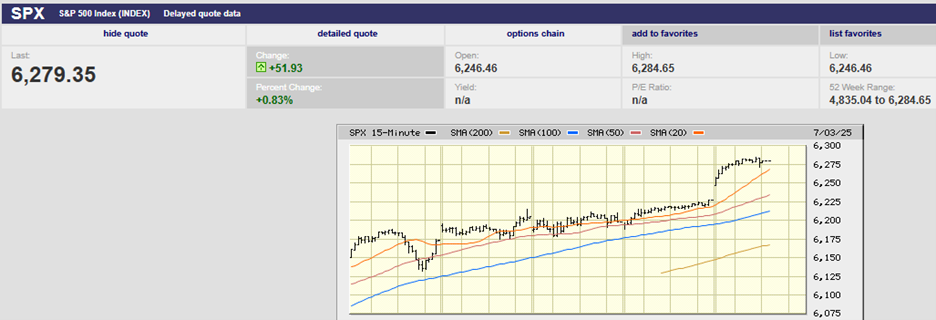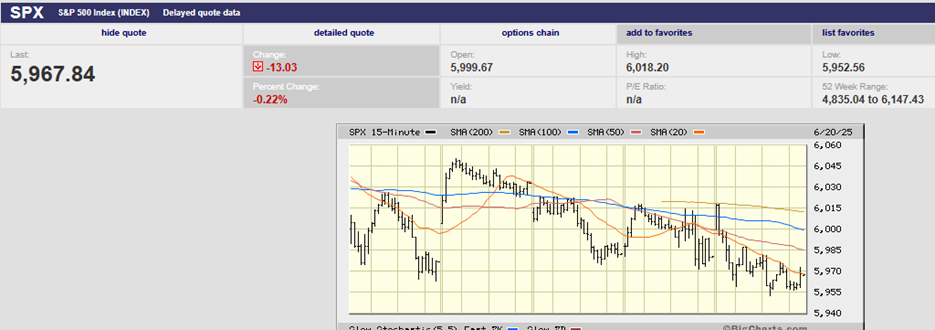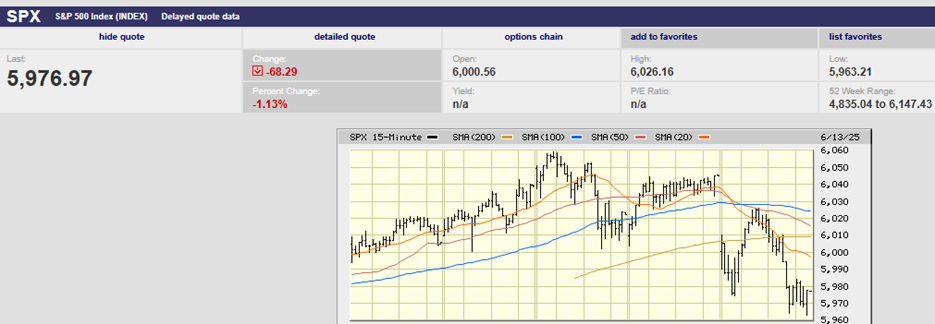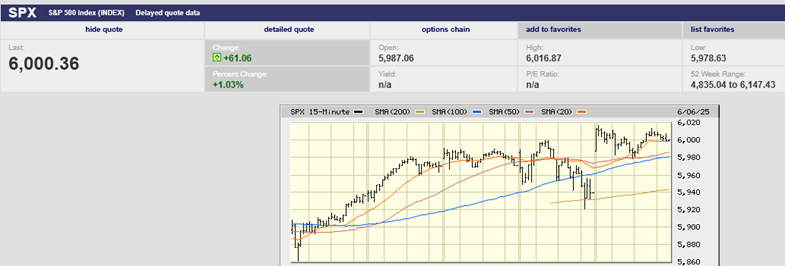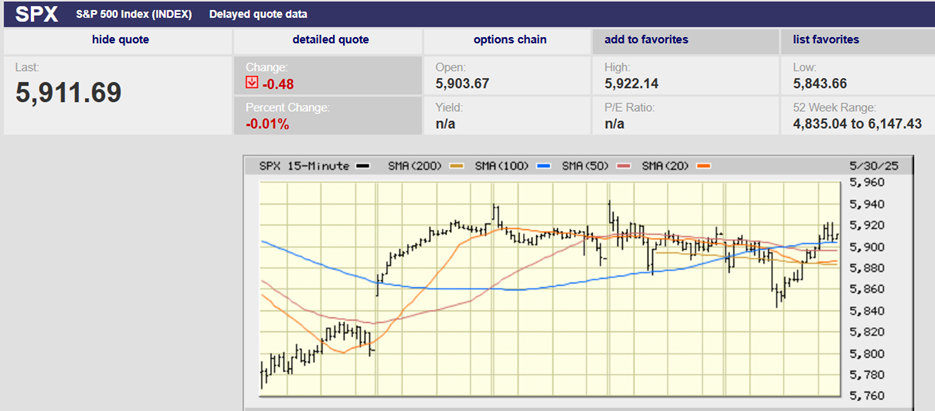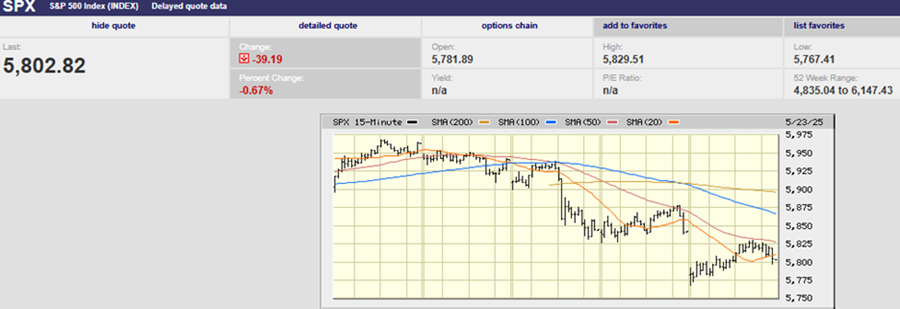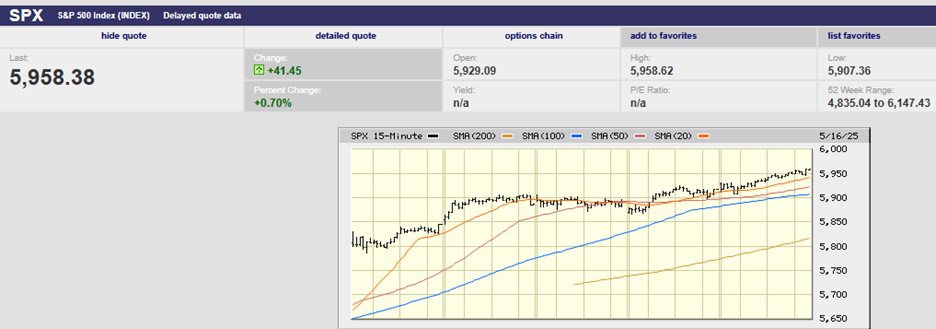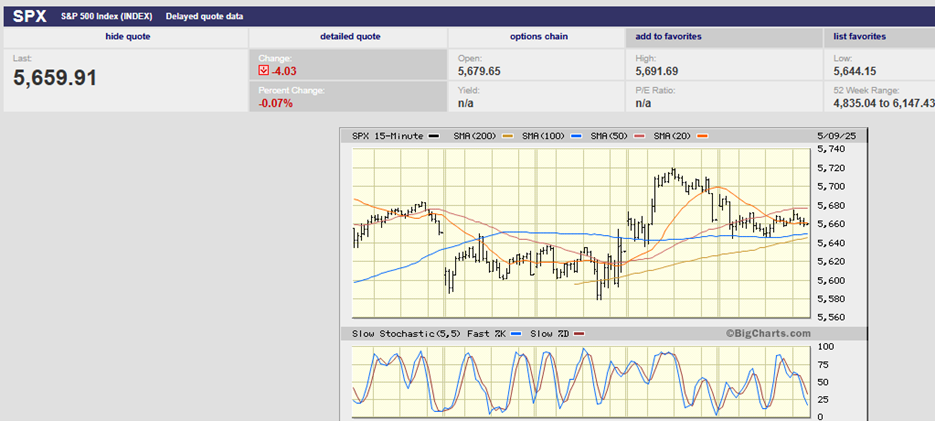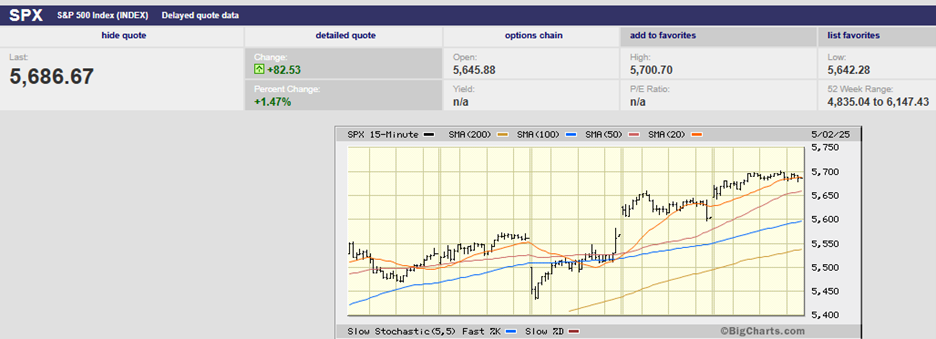It helps to ask questions

Market Update
The S&P 500 lost 0.29% last week to finish at 4124.08. The Nasdaq gained 0.40%. It is the sixth week in a row that the market moved less than 1% in either direction. In fact, the S&P spent the entire week trading between 4,098.92 and 4,154.28. The VIX fell to 17.03, near its 52-week low of 15.53. Periods of low volatility are followed by periods of high volatility. High volatility is associated with declining markets. Low volatility can last for years though, which makes it a questionable timing tool.
The debt ceiling debate might be the catalyst for higher volatility. Secretary of the Treasury Janet Yellin says the government will run out of money by the first of June. It’s widely believed that the actual date will be near the end of June, according to the news media.
Regardless, the bond market has begun to react to the possibility of default. Four-week Treasury bills auctioned Thursday sold at a yield of 5.723%. The eight-week T-bill sold at a yield of 4.793% in the same auction. The higher four-week yield was due to investors’ fear of default, according to Barron's. A default could mean not getting paid on time. Stocks might get hit in the next few weeks as well if equity investors begin to worry. The protracted debt-ceiling battle in 2011 saw the S&P 500 fall more than 19%.
Congress may find that the bond market has had enough of profligate spending. It wouldn’t be the first time that the bond market imposed fiscal discipline on the U.S. Congress. The Congressional Budget Office (CBO) is estimating a deficit of $1.5 trillion in 2023. That’s about 6.5% of GDP and far above the country’s sustainable growth rate. It matters because debt growing faster than the economy isn’t a sustainable trend. Congress has been able to run huge deficits for over a decade because debt servicing costs haven’t risen. Debt servicing costs haven’t risen because of falling interest rates. Rates stayed at or near zero for most of the period between 2008 and 2021. Congress was able to cut taxes and boost spending with no rise in the cost of debt financing as a result. That has changed.
Strategas wrote recently that, “The free lunch is over.” The Macro Institutional Research firm pointed out in a recent note that debt-servicing costs are rising for the first time in 40 years. Interest payments accounted for 12.7% of tax revenue in April, up from 11.7% a year ago. The bond market has a history of imposing fiscal discipline when net interest costs exceed 14% of revenue, according to Strategas. “I want to be reincarnated as the bond market because you can intimidate everybody,” James Carvelle famously said during the Clinton presidency. That quote may get a lot of airtime by the media in the next few years. The bond market vigilantes of the 1990s are likely to ride again if Congress doesn’t get its spending under control. It will be bad for bonds and stocks if that happens. Meanwhile, it will be bad for stocks and bonds if the U.S. does default in the next few months.
Economic Indicators
The Consumer Price Index rose 0.4% in April, matching the March increase. Core CPI rose 5.5% year-over-year down from 5.6%. The Sticky Price Consumer Price index fell to 6.32% in April from 6.45%. Inflation is receding but slowly.
The latest 12-month decline in M2 is the fastest pace since 1934, according to Dr. Lacy Hunt of Hoisington Asset Management. Hunt goes on to point out that the rapid rise in the velocity of money has kept inflation from falling faster. Velocity bottomed out at 1.112 in Q2 of 2020. It has risen to 1.258 as of Q1 of 2023.
He expects the rise in velocity will slow as business conditions worsen. Dr. Hunt also expects business conditions to worsen as credit conditions tighten. A more restrictive fiscal policy will also reduce demand. The country can’t keep running $1.5 trillion deficits, growing debt by 6.5% of GDP yearly. Spending growth will have to slow and that is contractionary.
Initial jobless claims rose to 264,000, up from 242,000 the week prior. The trend continues up. Continuing claims also climbed to 1.81 million from 1.80 million. Consumer sentiment fell in May to a six-month low. The preliminary reading of 57.7 was down from 63.5 in April. Current conditions fell by 3.7 points. Expectations of future conditions fell by 7.1 points to 53.4. Inflation and debt default worries were said to be weighing on consumers. Real weekly wages fell 1.1% in the 12 months through April, according to the Bureau of Labor Statistics. Peoples' paychecks are not going as far.
The economy should fall into recession later this year or early next. M2 is contracting at a 4.43% rate. It is the first contraction in money supply since the 1930s. The velocity of money should slow as tightening monetary and fiscal conditions impact demand. Tightening credit and reduced government spending will push the economy into recession. It is only a question of when.
Questions from 401(k) Participants
Norwood Economics provides education on the economy and capital markets to its 401(k) plan clients. We had several presentations last week. There were lots of good questions from the audience.
Yes, you can contribute to your IRA as long as you’d like. There is no more age limit.
Yes, you can contribute to your 401(k) as long as you’re working and don’t own at least 5% of the company.
No, you can’t contribute $22,500 to both a pre-tax and after-tax 401(k) account. The total of those contributions can’t exceed $22,500. The catch-up provision for those 50 and older is now $7,500.
Yes, you can save in other accounts besides your 401(k) account. You may not be able to make a deductible IRA contribution if you’re covered by a 401(k) plan at work. Married filing jointly status allows you to make a pre-tax contribution until your modified adjusted gross income (MAGI) reaches $116,000. The deduction phases out when your MAGI reaches $136,000.
Yes, you can make a Roth IRA contribution as long as your MAGI doesn’t exceed $218,000. It phases out by $228,000.
The IRA contribution limit for 2023 is $6,500. It is $7,500 if you are 50 or older.
No, the Roth contribution limit and income limit do not apply to a 401(k) plan contribution. A participant can contribute up to $22,500 ($30,000 if 50 or older) in after-tax contributions regardless of their income.
Fidelity estimates that you need to save at least 15% of your household income during your working years to maintain your lifestyle in retirement. Fidelity’s estimate assumes you invest the savings in an age-appropriate portfolio of stocks, bonds, and real estate during your working years.
A successful retirement doesn’t just happen. It takes planning. Make sure you spend time planning for a successful retirement. It will increase your chances of having one.
Regards,
Christopher R Norwood, CFA
Chief Market Strategist
